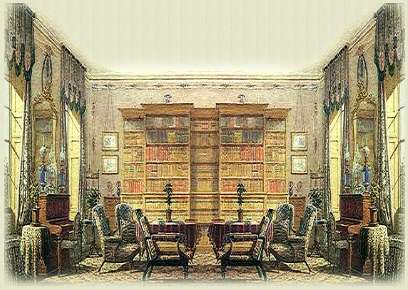by Jas Faulkner
 One of the advantages of the current technology available for photo sharing is the ability to find details that would have otherwise gone unnoticed. Thanks to less expensive digital imaging and social media, we have all seen recent pictures of ghosts, Big Foot, Chupacabras, Elvis, Tupac, and fiends deeply buried in our couch cushions.
One of the advantages of the current technology available for photo sharing is the ability to find details that would have otherwise gone unnoticed. Thanks to less expensive digital imaging and social media, we have all seen recent pictures of ghosts, Big Foot, Chupacabras, Elvis, Tupac, and fiends deeply buried in our couch cushions.
Through the pictures we scan and then expand we have discovered the lost libraries of our friends, our family and our childhoods.
We all do it. We see a picture of a book case int he background and our first impulse is to try to read the titles on the spines. Photos from my own late sixties to early seventies childhood reveals as much about my parents’ aspiration for me and my brother as it does about their thirst to continue their educations.
World Book Encyclopedias sit on a shelf just above a set of Childcraft nestled next to nature books from the US Parks Service and on the lower shelves, my legion of colorful, multi-culti books from Parents Magazine Press. On the upper shelves were books by and about Vince Lombardi, Gandhi, Charles Dickens, Abraham Lincoln, Sequoyah, Ken Kesey, Sam Levinson, Andrew Jackson, Helen Keller, and a slew of others who made that particular section the oddest of odd literary cocktail parties. Another shelf was home to my father’s pop science books and some much loved novels by Leon Uris, John Steinbeck, Mark Twain, Shirley Jackson. Heavy, delectable and forbidden without adult supervision were the huge volumes of art at the ends of each shelf. The spines I can see reveal Renoir, Chagall, Cassatt, Dali and Magritte. The latter two scared the bejesus out of me as a child and yet I couldn’t not stop looking at those books. It was like picking a scab.
There were more books out of frame and behind the three of us as we stood and smiled. My father, my brother and I were being captured for posterity by my mother, who wanted a lasting image of me at six and my brother at three. Looking at it now, I see more than Brady Bunch couture and baby teeth. They showed what moved my family to escape into books. They showed where our heads were in 1970.
Pictures of shelves seem to tell so much about families. Last week Sam sent me some scans from college. In the 1983 snap taken in her mother’s study, she is already looking edgier and more punk than I remember while I was a year away from hair colors that do not occur naturally on hominids and screaming myself hoarse at Black Flag and Flipper in the Bay Area. My mall hair and neon green slouch socks are there, preserved for posterity. Behind us is a section of her family’s library. No kidding. It made my first gen American, working class self gasp and turn around the same way Belle did in the Disney version of “Beauty and the Beast.
None of the titles are visible, but I am sure the leather bound editions of Kipling and Twain and the signed first editions of Slaughterhouse Five are not too far away. Unlike similar libraries I would encounter later on, Sam’s family library was meant to be read and enjoyed. The first few time I visited, I would feverishly wipe my hands before I dared touch a book only to have Carol, Sam’s mother, mutter, “Goodness, child!” as she reached for the book and handed it to me. An unread book was neglected writing, unlived and unloved.
IT seems that I am not the only person who gets a great deal of satisfaction from random acts of literary archaeology. Librarything’s Legacy Libraries recreates the libraries of notable individuals dating from the Ninth Century to today. The list is not limited to authors, although there are plenty of them. There are actors, scientists, artist and politicians and presidents online for your browsing pleasure.
It is tempting to reveal some of the more surprising finds here. But you know? Doing so would be so much preaching to the choir. go look for yourself. And while you’re there, consider a membership to Librarything. Twenty-five dollars gets you a lifetime membership to lots of book love and a great place to catalog your own library, thus enabling even more peeks at other people’s books.
